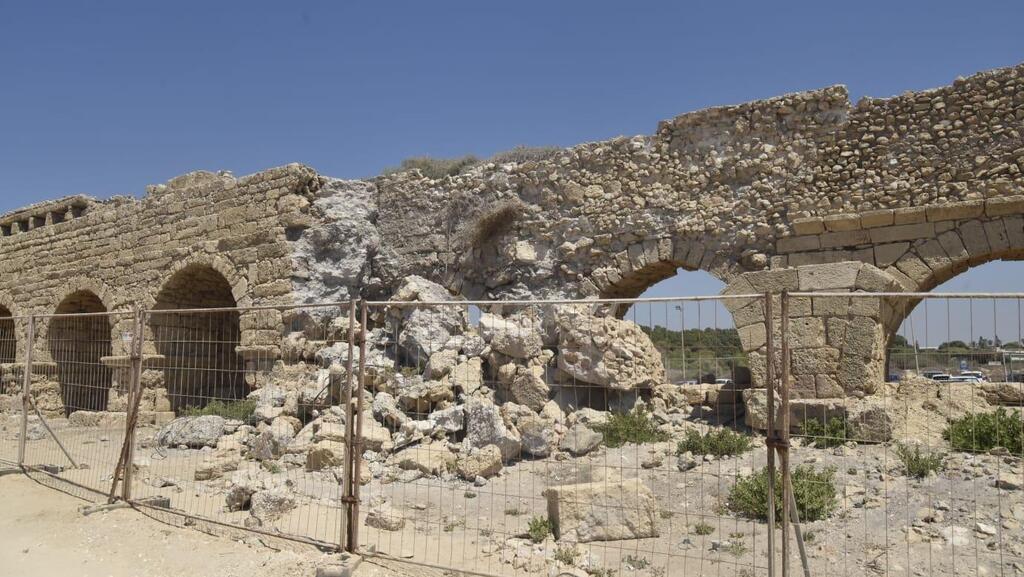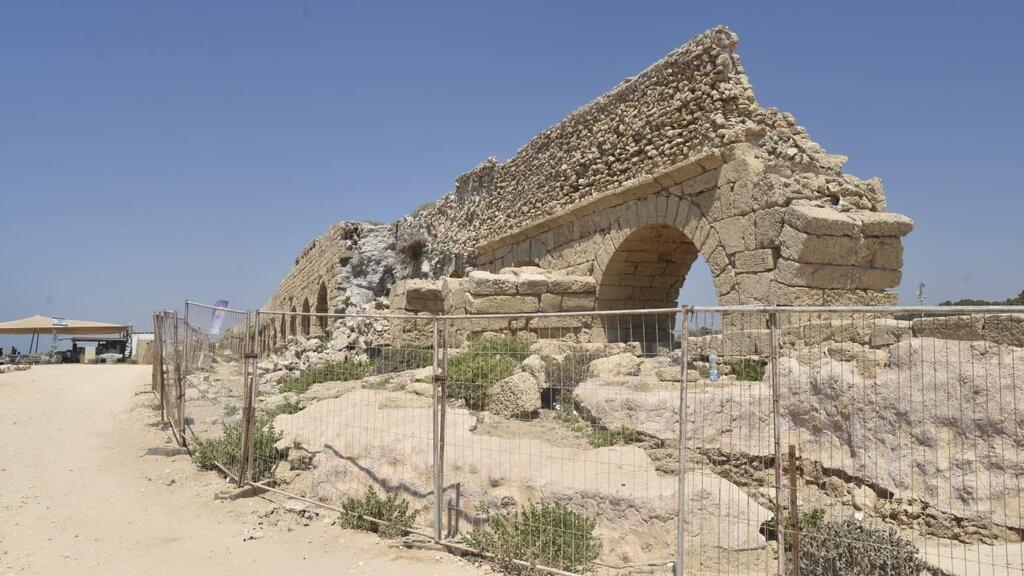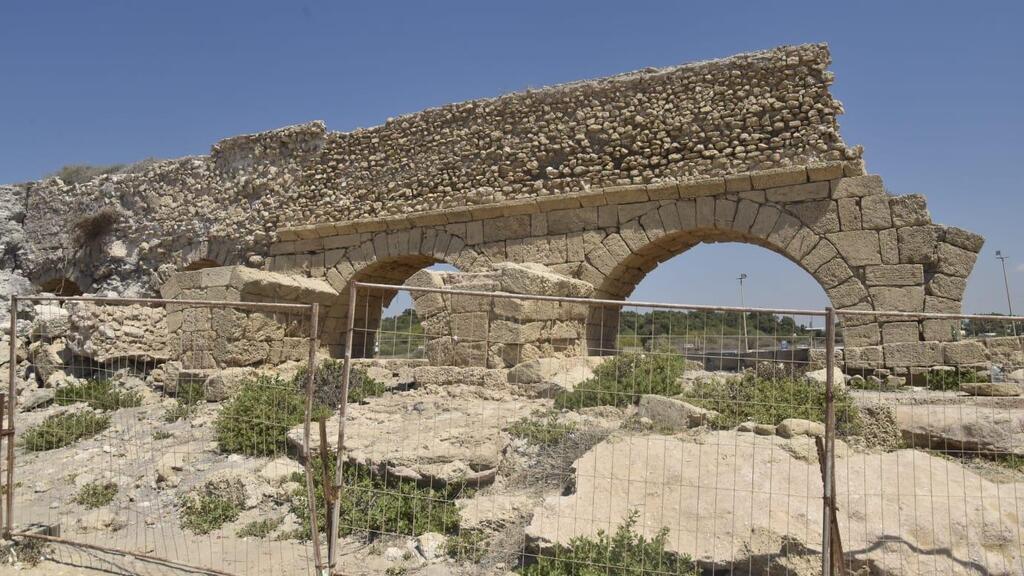A part of the ancient water aqueduct arch in Caesarea collapsed on Tuesday after the Caesarea Development Corporation (CDC), refused to take steps to prevent it despite the historical remains being under its jurisdiction.
Following the collapse, inspectors from the Israel Antiquities Authority (IAA) arrived at the site to assess the damage. The recent collapse comes after another section of the aqueduct that fell about a year ago. The structure, built 2,000 years ago during the Herodian rule, is a significant historical monument in Israel.
Caesarea’s upper aqueduct is a unique and impressive structure, notable for its size, quality, and the complexity of its construction. The aqueduct was built on arches, with a channel on top that transported water from springs in southern Mount Carmel to the city of Caesarea. These aqueducts supplied drinking water to the city, which served as a regional capital from the 1st century CE until the 7th century CE.
The aqueduct was constructed during the Roman period in two phases, during the reigns of Herod (37–4 BCE) and Hadrian (117–138 CE). The construction of the aqueducts reflects the changes in the size of Caesarea and the city’s water supply needs and is one of Israel's most important heritage sites.
Modern Caesarea, known as Caesarea Maritima to the Romans, was expanded from a modest city settled in the 4th century BCE by Phoenicians and later Israelites in the region. While most believe its name originated from famed Roman statesman Julius Caesar, Herod I dedicated the large city and its important ports to Rome’s first emperor Augusts (also named Gaius Julius Caesar).
The site currently lies on private land owned by the CDC, which serves as the Edmond de Rothschild Foundation’s operational arm. However, the foundation refuses to take responsibility for preserving the site.
Three years ago, even before the aqueduct first collapsed, IAA inspectors concluded that the aqueduct’s condition required urgent attention. A request was made to the CDC for the works to begin at the time, but the CDC refused to fund the preservation project.
"We warned them, we showed documents and plans, pointed out the situation is catastrophic and that there was a real risk of collapse," IAA Director Eli Eskozido, said. "We met with landowners repeatedly and even offered to fund a part of the work. I believe that we’ll find a sympathetic ear now."
However, his belief was misplaced and despite calls for the CDC and the Hof HaCarmel Regional Council to urgently allocate funds to restore and stabilize the remaining sections of the aqueduct at risk, nothing has been done to advance the issue.
According to sources familiar with the matter, the estimated cost for the aqueduct’s stabilization stands at about NIS 5 million, with the total cost of comprehensive restoration for the entire site estimated at around NIS 15 million.
Discussions with officials involved in the preservation of antiquities in Israel indicate that after the aqueduct’s collapse a year ago, the IAA attempted to secure funding from the Heritage Ministry and other ministries. However, they were limited in their ability to finance the preservation since the site is situated on private land. So far, a solution hasn’t been found to a problem that only worsens with time.
"For over four years, the Caesarea Development Corporation (CDC) has been trying to advance plans that will allow the preservation and development of Caesarea's Aqueduct Beach. Unfortunately, the condition of the aqueduct continues to deteriorate and bureaucratic obstacles prevent the necessary work, for which we are prepared to allocate significant resources," the CDC said in a statement.
"This comes after we've already invested over NIS 150 million in the preservation and restoration of Caesarea's port, transforming it into a bustling international tourist destination that ranks among the top 10 recommended tourist sites in the world according to The New York Times and the best international archaeological site according to European archaeology and heritage writers," the statement added.
"We hope that all relevant parties will join us soon and that together we can begin the preservation, restoration and development work to fruition — before the entire aqueduct collapses."




